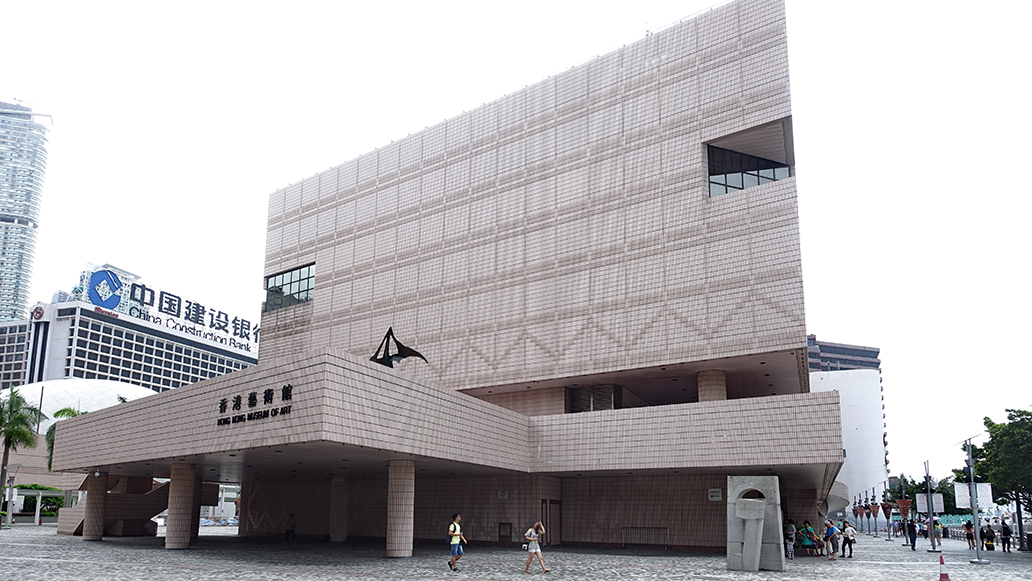Photo by Mk2010, CC BY-SA 4.0, via Wikimedia Commons
Father and I are on the upper deck of the Star Ferry, crossing Victoria Harbor, approaching the cinderblock skyline of Hong Kong Island. We’re coated in sweat from the humidity.
I understand why Mother decided to stay home in San Francisco. Father says she wilts in Asian summers. She preferred to visit somewhere temperate. Australia, or The Galapagos.
But Father wanted me to see the city of his youth, on the eve of the handover. So we left Mother behind.
He points to the gleaming HSBC Building. “Before they built that skyscraper, there was a lively outdoor market in the same spot.” He rests his chin on top of his hands, elbows on the railing. I’ve never seen him look so wistful. “Ms. Chan was too busy studying to eat, so I’d go there with her empty metal tin, fill it with noodles and bring it back to her dorm.” His sigh rises above the whirring of the boat’s motor. “She still eats street food. You’ll see.”
He gives me a look. He doesn’t have to ask. I’m 15, old enough to keep a secret.
The waiter sets a bamboo steamer onto the tablecloth, and lifts the lid. Father offers it to Ms. Chan first. She’s across from us, in a pink tweed jacket and pearls.
“Your son is handsome,” she says, lifting a dumpling off the parchment paper. “Looks so much like you.”
I’m thumbing through an old wood-bound photo album she’s brought. Inside, a young man with slicked black hair leans against a wall, his white sleeves rolled up, cigarette between his fingers, tendrils of smoke rising from his lips. There’s no way I’m as handsome as this man in the photo.
“My son is quiet and thoughtful,” Father says. “And curious about all things.”
“Must bring you so much delight,” she says.
“Every single day.”
I turn the page, and there’s a young woman in a floral cheongsam, seated at her desk, metal tin next to a pile of open books.
“What were you studying?” I ask her.
“Ancient Chinese Ritual Art.”
Ms. Chan gives us a private tour of the Hong Kong Museum Of Art, where she is curator of funerary sculpture. We take the elevator to the basement archives. She lets us turn a 3000 year old Shang Dynasty wine vessel in our white gloved hands, the swirling taotie spirit mask etched across the green-streaked bronze, above three delicately curved legs. “These were buried in the tombs of noblemen,” she says.
She’s holding a polished miniature stone water buffalo, its shoulders stout and lustrous, circa 1200 BCE. She rolls the buffalo into my father’s palm, the tips of her cotton gloves running up the side of his hand in one smooth motion. She rests her fingers there for a moment before letting go.
“It’s exquisite,” Father says, a quiver in his voice.
“I get these nasty letters from the Chinese government,” she says, “demanding we give their stolen national treasures back.”
“Why bother?” I say. “Soon they’re getting all of Hong Kong back.”
She looks at Father.“He’s only 15?” she asks. Then, turning to me, “I hope you come visit me again.”
Under the table, I can see Father’s white glove on her chair, fingers tapping the seat, millimeters away from her thigh.
The last day of our trip, Father and I are in a gallery on Antiques Street, in Sheung Wan. His eyes widen under a pair of loupes, as he examines a Ding tripod cauldron.
“Take it to your curator friend,” the gallery owner says. “Pay me only after she authenticates it.”
A green layer of patina coats the bronze, like the ones at the museum.
He checks his watch. Still early.
“It’d look so beautiful in Mother’s display case,” I say, “next to her fine china.”
Father’s eyes start to glisten, magnified.
I meant it sincerely, not as a warning shot, and I immediately regret what I said.
Father hands the tripod back. “It’s a generous offer,” he tells the gallery owner. “But I’m going to pass.”
Eliot Li lives in California. His work appears or is forthcoming in CRAFT, Smokelong Quarterly, Pithead Chapel, Atticus Review, Pidgeonholes, and elsewhere.

